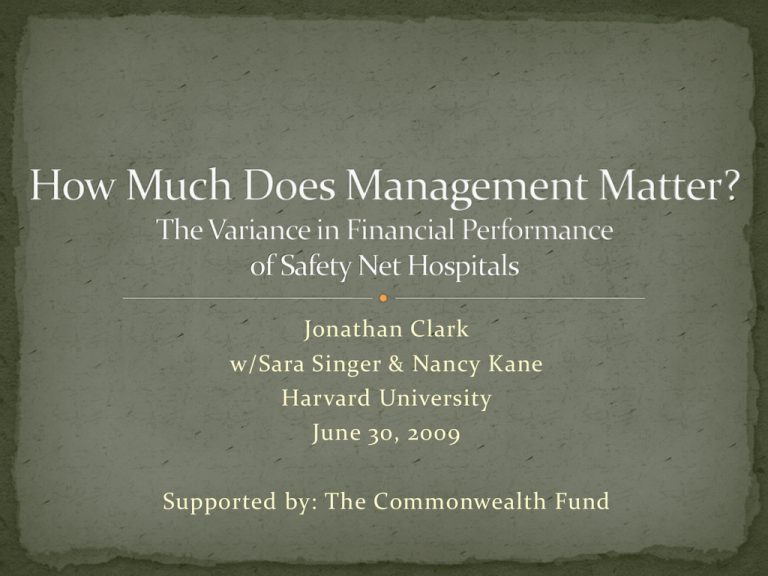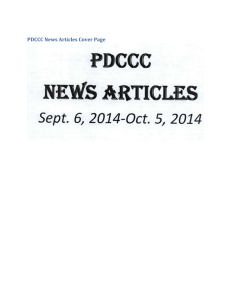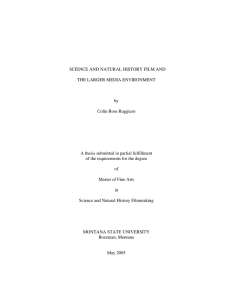Jonathan Clark w/Sara Singer & Nancy Kane Harvard University June 30, 2009
advertisement

Jonathan Clark w/Sara Singer & Nancy Kane Harvard University June 30, 2009 Supported by: The Commonwealth Fund Both met one or more safety net hospital (SNH) criteria Hospital 1 266 beds Community hospital Good financial performance Hospital 2 236 bed Community hospital Poor financial performance Closed 2008 What explains this difference in performance? Three levels of nested factors: Policy and macro-economy (Friedman and Shortell, 1988) Markets and competition (Dranove, et al. 1993) Organization and management (Douglas and Ryman, 2003) What factors matter most for SNH financial health? 5 year panel of financial data for a sample of 156 hospitals meeting safety net criteria Longitudinal criteria based on share of support provided to three vulnerable groups: Medicaid patients Minority patients Free care patients 2003-2007 audited financials or IRS 990 filings Hospitals from 15 states in all 4 US census regions Simultaneous nested ANOVA method (following McGahan and Porter, 2002) Hierarchically nested fixed effects Assess the incremental explanatory power (change in R2) of each factor in OLS regression model Analyzed variance in 4 outcome measures: Operating margin (Mean -0.026; SD 0.12) Days cash on hand (Mean 76.03; SD 101.07) Equity financing ratio (Mean 0.26; SD 0.44) Composite measure of financial health (Mean 0.00; SD 1.00) Factors Influencing Corresponding SNH Variables Federal Policy Year and Macro-economy Fixed Effects State Policy State and Regulation Fixed Effects Market Market** Factors Fixed Effects Organizational Hospital Factors Fixed Effects (a) Working from top to bottom add each fixed effect to the OLS model (b) Analyze change in R2 for each effect **Markets defined using Health Referral Regions (HRR) available from The Dartmouth Atlas Operating Margin 40.3 Remaining Variance (1 - R2 for full model) 27.3% Hospital Fixed Effects 22.8% 8.6% 1.0% Market Fixed Effects State Fixed Effects Year Fixed Effects Note: State, market and hospital incremental R-squares are significant at p<0.01 Operating Margin Days Cash Equity Financing Ratio Composite Financial Score 10.8% 15.9% 18.1% 46.7% 44.8% 22.4% 22.2% Market 14.5% 14.7% State 0.5% 0.2% Year Remainder 40.3 40.3% Hospital 27.3% 37.3% 22.8% 8.6% 1.0% 11.3% 0.3% Note: State, market and hospital incremental R-squares are significant at p<0.01 Operating Margin Days Cash Equity Financing Ratio Composite Financial Health 10.8% 15.8% 18.1% Remainder 50.1% Hospital 40.3 48.8% 49.4% 34.8% 28.8% 19.8% 16.9% 11.3% 0.3% 14.5% 14.7% 0.5% 0.2% 15.3% 8.6% 1.0% *Note: In markets with only one SNH, market effects cannot be distinguished from organization effects Market State Year Start with what they do NOT mean: Do not mean policy and the macro-economy don’t matter Do not mean markets don’t matter Results are consistent with management literature (McGahan and Porter, 2002) Suggest leaders have managerial levers available to improve SNH financial performance What are the levers available to SNH leaders? Subject of continuing study of SNH performance Management literature provides a starting place Governance Levers (Kane, Clark and Rivenson, 2009) Strategic Levers (Douglas and Ryman, 2003) Operational Levers (Tucker, 2007; Huckman, Staats and Upton, 2009) Cultural Levers (Kotter and Heskett, 1992) Douglas, T. and Ryman, J. 2003. “Understanding competitive advantage in the general hospital industry: Evaluating strategic competencies.” Strategic Management Journal, 24: 334-347. Dranove, D., Shanley, M. and White, W. 1993. “Price and concentration in hospital markets: The switch from patient driven to payer driven competition.” Journal of Law & Economics, 36: 179-204. Friedman, B. and Shortell, S. 1988. “The financial performance of selected investor-owned and not-forprofit system hospitals before and after Medicare prospective payment.” Health Services Research, 23(2): 237–267. Goes, J. B., & Zhan, C. 1995. “The effects of hospital–physician integration strategies on hospital financial performance.” Health Services Research, 30: 507–530. Kane, N., Clark, J. and Rivenson, H. 2009. “The internal processes and behavioral dynamics of hospital boards: An exploration of differences between high- and low-performing hospitals.” Health Care Management Review, 34 (1): 80-91. Kotter, J. and Heskett, J. 1992. Corporate Culture and Performance. New York: Free Press. McGahan, A. and Porter, M. 2002. “What Do We Know About Variance in Accounting Profitability?” Management Science, 48 (7): 834-851. Porter, M. 1991. “Toward a dynamic theory of strategy”. Strategic Management Journal , 12:95-117. Tucker, A. 2007. “An Empirical Study of System Improvement by Frontline Employees in Hospital Units.” Manufacturing and Service Operations Management 9(4): 492-505







